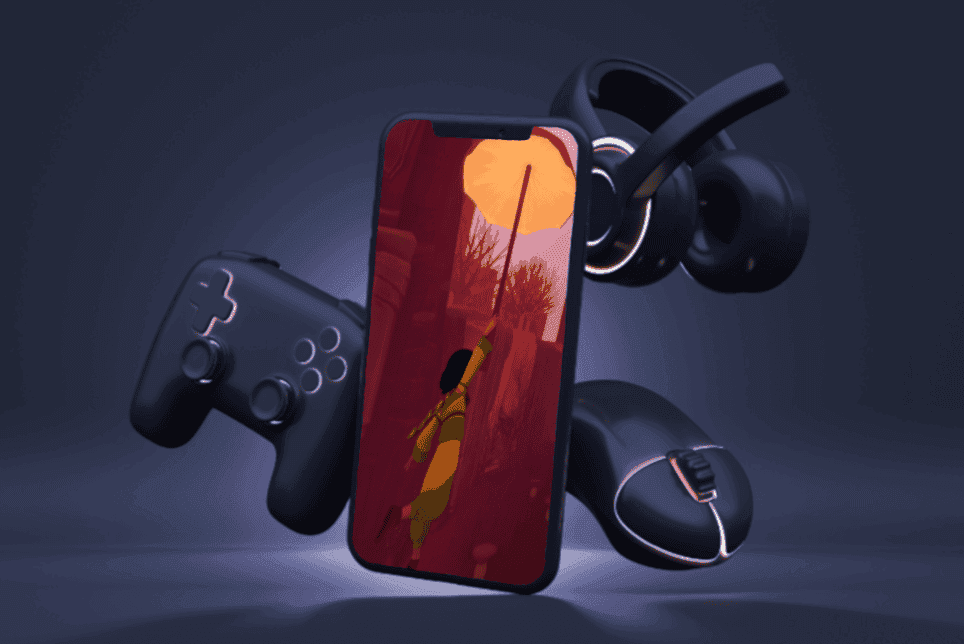From over 13 years making hit mobile games, I’ve picked up many valuable design tips. I’d love to share these mobile game design tips to help you make a game that is more fun, satisfying and keeps players coming back for longer.
These are the strategies we’ve used at Kwalee to make hits like Draw it, Airport Security and Teacher Simulator - all three have been downloaded over 100 million times.
So if you’re a mobile game developer, or are interested in the way these games are crafted in a meticulous way to make them even more enjoyable, read on. I’ll talk about how you can create a satisfying game experience, how to send players on an emotional journey that keeps them coming back for more and how to choose the right art style for your game.
The Hook, Hold And Scale Model
Times have changed in mobile. During the Hyper Casual era, we could ship a prototype with an attention grabbing visual that captures a player for a short time. That’s all we needed. Nowadays, most developers and publishers are chasing the Hybrid Casual and Casual market. This means that a hook isn’t enough. You need a meatier, satisfying experience with far greater retention and more content.
This is where I use the ‘hook, hold and scale’ model. Broken down into these three parts, you should:
Hook - Think about what makes a player notice the game? We’re still aiming for a low cost per-install, so we are working to keep UA at a price that can justify spend and scale.
Hold - What keeps players invested? You’re looking to craft games that make players feel like their time investment has been rewarded and that by continuing to play, the gameplay experience also improves.
Scale - You want players to come back for weeks, months and years. So you’ll need to consider what meta and variation you can bake into the game to justify engagement measured in months instead of weeks.
Let’s take an example of one of my projects that uses these mobile game design tips:
Draw it is a rapid-fire drawing game where the player competes against others by doodling one of two options. You’re racing against the clock trying to get your drawing recognised by the game - using AI before AI was everywhere.
This simple concept lent itself well to a hook. We thought carefully about the first 5 seconds of our ads, found out what wowed the viewer and how quickly they could get the concept. The UI of the game and its simple hierarchy tells the game’s story. The simple, realistic drawing style showed it was accessible for anyone. The hook was also the wow factor of the game guessing your drawings - this was before ChatGPT and it felt like magic. Every time it gets it wrong, you feel like your drawing justifiably looks like the prompt and so you try even harder.
The hold comes from the nature of the pictionary style gameplay. It encourages replayability to improve. You’re also trying to learn what makes the game guess your drawing correctly so you spend time understanding the guesser and trying to get it quickly to that point.
The scale worked well in a competitive 4 player PVP game. You can progress solo through features like skins and word packs, but you’re always looking to come out on top in any given game and charge up the leaderboard.
Embrace Physicality And Feedback In Your Game Design
One of my top mobile game design tips is to embrace physicality. There’s lots of deeply satisfying mechanics that draw in players. For example, we’ve had lots of fun with untangling cords, and pouring liquid which can be wonderfully dynamic. Check it out in our mobile games such as Perfect Coffee 3D or Drink Mixer 3D.
However, lots of game designers do something incredibly unsatisfying - they disconnect a player's action from the game’s reaction. There should be immediate feedback related to your input. Too often in games, I release my finger to complete an action and an animation limps off screen, or there’s an arbitrary pause that detaches my work from the action on the screen.
Think of player input like a mini explosion. There should be an immediate knock-on effect in the game. It shouldn’t feel like your action triggers a flamboyant interaction where you’ve sent an instruction into the game that arrives a few seconds later. Instead, think of the subtle positive feedback you get if you play a game and your swipes or taps smash the blocks - this is where physicality and feedback work hand in hand so well.
Master The Emotional User Story
There’s a lot of games on app stores and lots of these are good games. There’s a few great games. A lot of people say that building polished and moreish game mechanics is the most important factor. However, I believe that games become great when you build an emotional journey with the player.
This is an example of how a player’s emotional state can change through the course of a game level:
- They start determined
- The challenge of the game gets them thinking
- As they solve the challenge, they have a feeling of eureka
- They then feel happy
- Moving onto the next challenge, they’re back to thinking
- Once solved, they have the eureka and happy moments again
- This alternates as they build up in momentum and see the end of the level in sight
- Then there’s a strong burst of dopamine as they succeed
Moving players through these emotional stages is critical to making a satisfying game. You’ll need to craft the visual language of progression and be confident that players are actually taking in the things that you think are satisfying about the game.
For example, you don’t want players feeling good simply because they popped some blocks. You want them to feel good because they made a decision that steps them towards their goal. They had choices and options, but the decision they made was right and they are rewarded as a result.
So by having popped blocks that spawn icons that move them towards the goal, you’re connecting their actions to progress and directing their attention periodically to the goal.
Go through your level frame by frame - when you get something that feels good, try to understand why. That will help you make lots and lots of positive decisions in your game. The whole package will feel more worthy in terms of people’s time, their willingness to watch reward ads and spend money on IAPs. People will be more willing to spend money on a lovingly crafted game that sends them on an emotionally coherent journey.
The Importance Of A Satisfying End-level Flow
All your hard work crafting a great game design can be heavily damaged by a poor or cheap approach to end gameplay pacing. It’s a key problem area that can turn your game from a ‘just one more try’ to a ‘nah I’m good’ churn.
A typical approach might be to have a UI explain that you’ve won, and then an overlay breaks down the level by your achievements in numbers - it explains what happened.
However, don’t consider end flow through this lens. Instead, consider the user’s emotional journey through the game and how we can complement that through the game design.
Keep players aware of how close to the finish line they are. It seems small but that feeling that you’ve nearly made it to the end of the level is so much better than being randomly surprised it’s over.
It’s hard to get excited about a game if you’re grinding away and every now and then it tells you randomly that it’s done. During play, confusion and being underwhelmed are the enemy.Standards are high today, so you can’t leave players questioning why they’re playing and if it’s worth their time.
The end moment needs to build with a crescendo and feeling of achievement, rather than being sudden. The end of the level isn’t just a formality. Think of it as the epic climax of their journey to make them feel good.
Removing or replacing UI at the end lets the player know they can take their finger off the screen, enjoy the celebration and know that they’ve moved onto another phase of the flow.
Consider well placed fanfare, but do not overstay your welcome. You need a reward flow that satisfies the effort that took a player there. Done right, it can help offboard a level to make it feel satisfying. Just as with any movie, book or other entertainment, you don’t want to tell them how to feel, you want to make them feel it.
You then need to help the player make a very important decision - leave or play again. Churn or retention. Think about what motivates the player to keep going. Value their time. Use visuals to better represent the rewards you give e.g. using gem and coin icons, rather than text, to show that they are worth a premium.
Try to always use meaningful CTAs e.g. ‘Claim’ over ‘Continue’ - to show they are banking hard earned rewards, not just functionally tapping to move on to the next screen. You want them to feel FOMO in a positive way.
Mobile Game Design Tips For Art Quality
My final tip relates to art quality and the crucial question - how much does it matter?
There’s a curve of value you get from increasing art quality. There will always be incredible value in a coherent and satisfying style, so aim to create a game that looks like it was visually well thought out and planned. The best way to do this is to actually think it out, and plan it. Whether players pick up on it or not, it adds a lot of value to the feel of quality.
That being said, there can be diminishing returns depending on the expectations and taste of an audience. Benchmark with your competitors and ask, can you realistically compete in that space with the best games out there?
No matter what you choose, I’m a massive advocate for investing in good quality UI animations. Modern day Hybrid Casual games are competing with Casual games and this can help you compete in the same space. You can still use asset packs in your game, but work to make the UI presentation coherent and polished.
If you’d like to read more of my advice for mobile game developers, check out my blog on how to be successful making mobile games. If you love the craft of fun games as much as us, then you might like to publish with us, or join our team.








